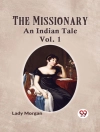’The Metamorphosis’ is Franz Kafka’s brilliant serio-comedic novella about Gregor Samsa, a young man who wakes up one morning to find himself inexplicably changed into a giant cockroach. The sole breadwinner for his family, Gregor suddenly finds himself unable to leave his own apartment and unable to communicate even to his own family. As the plot progresses and Samsa’s family struggle to keep him alive, he is forced to come to terms with his own literal parasitism and his very worth as a creature on this planet.
This book was unpublished during Kafka’s lifetime but eventually became one of his best-known and most revered works. It is presented here in its original and unabridged format as translated from the German by David Wyllie.
Om författaren
Franz Kafka (1883-1924) was a German-speaking Jewish writer born and raised in Prague (then a part of the Austro-Hungarian Empire). While few of his works were published during his lifetime, the books and short stories that appeared posthumously became enormously popular and Kafka is now considered one of the major literary figures of the 20th Century. Born to a middle-class family, Kafka trained to become a lawyer, eventually finding work in the insurance industry. In his spare time, he would write short stories, novels and hundreds of letters to both family and friends. Plagued by self-doubt about his writing, Kafka regularly burned his own work rather than risk ridicule and poor reviews. (It is estimated that as much as ninety percent of his writing went up in flames.) The few pieces that were published during his lifetime (including his novella The Metamorphosis) received little attention. Kafka died in relative obscurity in 1924 at the age of 40 from tuberculosis. In his will, he instructed his friend and executor Max Brod to destroy what remained of his work but Brod ignored this request and published much of his writing instead, including the novels The Trial, The Castle and Amerika. These books became hugely popular in German-speaking countries following World War II and were soon translated and disseminated to various other countries, eventually leading to worldwide fame. His writing style – which included fantastical and surrealistic scenarios and bizarre plots – became especially popular during the 1960’s, and influenced a generation of artists, writers and philosophers, who coined a word to describe such works that is still in use today: ’Kafkaesque.’












